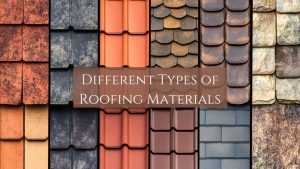
Water leakage from a concrete roof is a common issue that can lead to structural damage, damp interiors, and unhealthy living conditions. Cracks, poor drainage, or inadequate waterproofing are often the culprits behind this problem.
Ignoring roof leakage can escalate repair costs and compromise the building’s integrity. Fortunately, effective solutions are available to prevent and fix this issue.
But what is concrete composed of? And why does water seep in if it’s a strong material? Let’s find out the permanent solution to stop water leakage from concrete roofs, ensuring durability and protection for your home or building.
What Causes Water Leakage in Concrete Structures?
Concrete is a mixture of 40% gravel, 30% sand, 20% water and air, and 10% cement. Apart from roofs, it can be used to build decks, ceilings, floors, and many more such structures. Factors like impurities in aggregates, improper concrete placement, deviations from designated mix due to human error, an overdose of admixtures, poor-graded aggregates, etc. are responsible for water leakage in concrete.
Let’s check what could cause water leakage in concrete based on the materials:
- Coarse aggregates: If the coarse aggregates are poorly graded, are large, or contain dirt materials, the concrete could have voids in them. Water seeps into these voids and weakens the concrete leading to its damage.
- Fine aggregates: Improper fineness modulus and the presence of impurities in fine aggregates could lead to water leakage.
- Reinforcement bars: Over reinforcing concrete, cement mortar over steel bars, presence of shutter oil, and use of rusty steel bars may cause water leakage.
- Admixtures: Mixing improper admixture types, improper dosage, and expired admixture could lead to leakage in concrete.
- Type of cement and mixing water: Water or cement containing salinity and organic materials could make water leak into concrete.
- Deviation from designed mix ratio: Incorrect aggregate quantity and use of more water than required are reasons for water seeping inside the concrete. Instead of water, you could use a superplasticizer under the supervision of an experienced engineer.
- Concrete placement issues: Segregation of concrete is a significant placement problem that causes water to leak. This happens when the concrete is pumped. So make sure to place the concrete from a low height.
- Workmanship quality: This includes plumbing failure, improper curing of concrete, improper compaction of concrete, insufficient clear cover, poor formwork installation, and poor mixing of concrete. You should inspect it visually to confirm its workability when it is made in the machine. Also, use a retarder to increase the time frame of placing, compacting, and finishing the making of concrete.
- Roof Cracks: Cracks, often a consequence of aging, adverse weather, or improper installation, can allow water infiltration. Regular inspections are crucial to detect and address these cracks promptly.
- Improper Slope: Inadequate roof slope may cause water to pool, leading to leaks. Whether too shallow or steep, ensuring the proper slope during installation or roof leak repairs is essential to prevent water damage.
- Flashing Damages: Damaged or incorrectly installed flashing, a protective material around roof joints and angles, can permit water entry. Regular inspection and maintenance of flashing are essential to prevent further damage.
- Tiles Damages: Weather or poor installation can damage roofing tiles, allowing water penetration. Prompt replacement of damaged tiles is crucial to maintaining effective roof waterproofing.
- Improper Maintenance: Neglecting regular maintenance tasks like gutter cleaning and debris removal can result in water accumulation, leading to roof damage and leaks.
- Excess Roof Moisture: Poor ventilation, weather conditions, or structural leaks can lead to moisture accumulation, fostering mildew growth and causing roof weakness.
- Corrosion: Particularly in metal roofs, exposure to the elements can cause corrosion, leading to material deterioration, cracks, and holes that permit water infiltration.
- Aging: Natural aging of roofing materials over time can lead to brittleness, cracks, and loss of protective coatings, making the roof more susceptible to leaks. Regular inspections are vital to address aging-related issues promptly.
How to Stop Water Leakage From Concrete Roof?

Concrete roofs are prone to water leaks because of cracks and scales that formed within them over time. Despite this disadvantage, concrete is widely used in construction because its pros outshine its cons. It is resistant to fire and water, is cost-effective, and is durable. Just a bit of timely maintenance will make sure your concrete roof is sound and safe.
Here’s what you need to do if you have water leakage in your concrete roof:
1. Look For The Source of The Leakage
The 1st step of how to stop water leakage from a concrete roof or any other kind of material is to look out for the source of the leakage. Inspect the whole roof for ponding wetness and do not forget the plumbing lines. Check the sides of your building, the drainage pipes, and other water-carrying structures. Accessing your commercial roof could be dangerous unless you are a professional. So get some experts in roof maintenance to carry out the inspection.
2. How to Stop Water Leakage From Roofs? Fill in The Cracks!
Everyday wear and tear could create holes and cracks in the concrete. Water penetrates these voids and weakens the structure. If the situation is not widespread you could carry out minor repairs yourself with these tools:
- An elastomeric sealant
- Roof primer
- Roof cement
- Some mortar
Steps to stop water leakage :
- First, make sure the entire roof is clean by removing all kinds of dirt and debris using a pressure washer.
- Then fill in the holes or cracks with roof cement or mortar.
- Apply a roof primer and wait for it to dry completely.
- Once that’s done, apply the elastomeric sealant over the corners, holes, cracks, and other damaged areas.
- You may even apply a second coating the next day to reinforce it.
Oh, just following these instructions is not enough, you have to do some research about their chemical ingredients, safety, accurate measures, and other such info.
3. Regular Maintenance
Regular maintenance at least twice a year is what saves the concrete from coming apart. There are extensive maintenance procedures apart from simple cleaning and usual inspections. If you are not trained to climb large buildings, you might be putting yourself in danger. It’s better to hire a professional to inspect your concrete roofs. However, you can do minor monitoring and repairs and report all concerns so that the professional can address them properly.
4. Asphalt Shingles
When dealing with pesky roof leaks, the secret lies in mastering the installation or repair of asphalt shingles. This robust and pocket-friendly roofing material demands a strategic approach:
- Conduct a thorough roof inspection to unveil signs of wear and tear.
- Skillfully straighten and reattach those rebellious curled shingles.
- Employ roof sealant wizardry to mend those sleek, clean cracks.
- Swiftly replace the fallen soldiers – broken or missing shingles.
5. Roll Roofing
Roll roofing is another roof leakage solution, kin to asphalt shingles, and a godsend for low-sloped roofs. Master the magical art of maintenance:
- Scour the roof for cracks or blisters, seeking imperfections.
- Unleash your powers, cutting open blisters to liberate trapped air.
- Apply roofing cement beneath the split, sealing it with precision.
- Should the need arise, swap the roofing substrate with finesse.
- Cloak the wounded area with a patch of roll roofing.
- Seal the deal with a final layer of roofing cement, creating a fortress against leaks.
6. Wood Shakes
Embark on a journey of wood shakes, hewn from the majestic cedar or redwood. For those steep-sloped roofs, follow the path to repairing wood shakes:
- Intrepidly explore the roof for any signs of damage.
- Employ a hammer or chisel to elegantly split the cracked shakes.
- Artfully sever the nails holding the broken shake captive.
- Introduce a new shake into the gap, securing it with gallant galvanized nails.
- Adorn exposed nail heads with a touch of roofing cement, ensuring a seamless repair.
7. Leaky Joints
Discover the art of alchemy in fixing leaky joints, where different facets of the roof converge:
- Connoisseurs, inspect those venerable joint areas – chimneys or valleys.
- Channel your inner alchemist, applying roof sealant with a masterful stroke.
- Secure a strip of metal flashing over the domain, fastening it with roofing nails.
- Seal the roof leak deal by bestowing an additional coat of roofing cement upon the flashing.
8. Concrete Roof Waterproofing
Behold the resilience of concrete roofs, stalwart against the test of time yet susceptible to leaks. Harness the power of repair:
- Embark on a quest to unveil the mysterious source of the leak.
- Prepare the battleground by purging debris or renegade concrete.
- Bestow upon the afflicted area a potion of sealant or patching compound.
- Allow the patch to bask in the sun, drying into a fortress against leaks.
Why Should You Consider a Concrete Roof?
Now that you know how to stop water leakage from concrete roofs, here’s a follow-up question: why should you consider having a concrete roof? Let’s check out some advantages of having a concrete roof in your house:
- Highly durable: Concrete is one of the toughest materials in the construction industry. It is not only used for roofing but also in building dams, sewers, and bridges. Its durability depends on the voids in the concrete mixture. Scroll up to find out why concrete loses its durability and leads to water leakage.
- Weather-resistant: Concrete roofs effectively resist heavy storms and strong winds. If you are residing in an area with harsh weather conditions, you must consider having a concrete roof.
- Fire-resistant: Concrete is non-combustible and can withstand fire even in large buildings.
- Easy cleaning: You only need to use a pressure washer to clean moulds, dirt, dust, stains, and other debris to keep the concrete roof clean.
- Longevity: By using high-quality products and installing the roof properly, a concrete roof will last anywhere from 40 to 50 years.
- Cost-effective: Considering the advantages it offers, concrete roofs are way cheaper than commercial roofing systems.
The Bottom Line on on Permanent Solution for Roof Leakage
Concrete roofs are extremely durable but they may leak water when there are voids in the material and inadequate maintenance. The cracks in concrete get filled up with water leaking from plumbing systems, or regular wear and tear. So how to stop water leakage from concrete roofs or other structures? Find out the source of the leakage and repair them. If you have found cracks in the concrete structure (roof in this case) fill them up with roof cement or mortar. If these DIY methods do not help, get a professional to check your concrete roof. They will have the tools and training to clean and fix a concrete roof.
Remember before setting out to do it yourself that you are going to deal with stuff that has chemical agents in it. It could be dangerous if you don’t know how to use them properly. So get onto the internet for some extensive research about them or better ask a professional for advice. If you have the licence to use the tools and stuff, they will even assist you in repairing the leaking concrete in your house.






